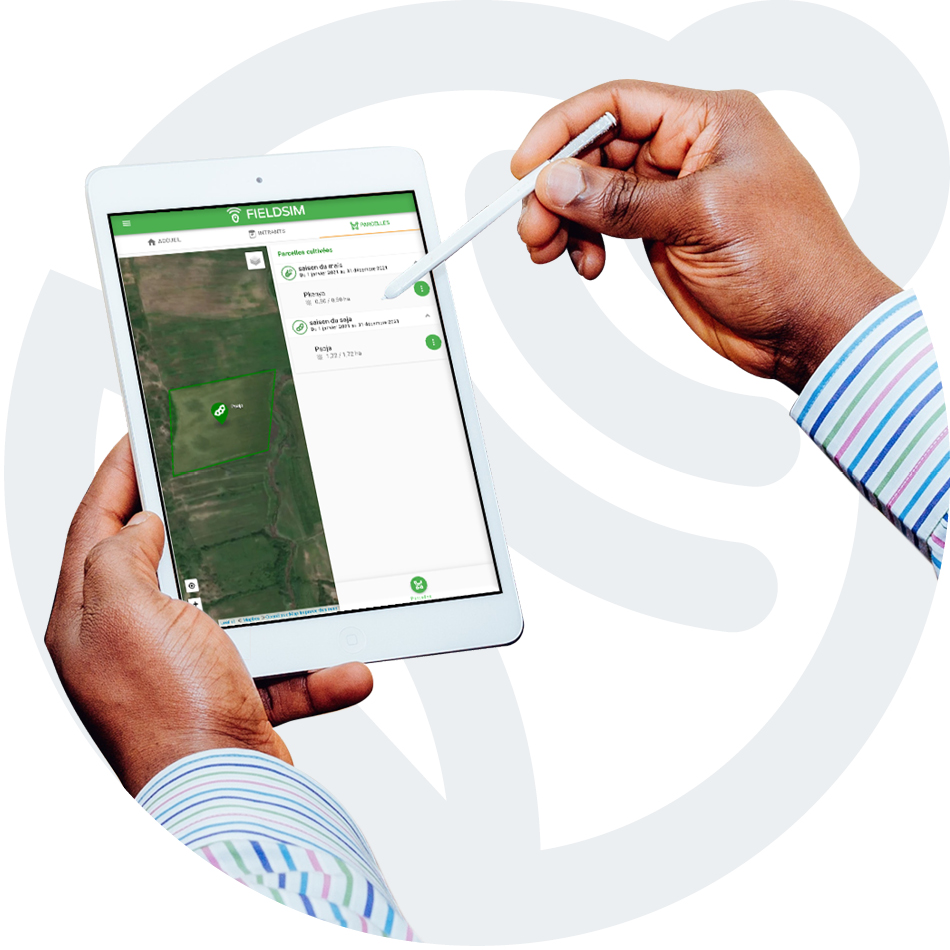Benefits for kenyan farmers
A largely dominant subsistence agriculture
Subsistence agriculture, focused primarily on self-sufficiency and the subsistence economy, is still largely dominant in Vihiga County in Kenya. This form of agriculture, with very low yields, allows rural populations to feed themselves. With limited access to external markets and generating little surplus, however, it does not allow these populations to escape poverty, making this local economy particularly vulnerable to the consequences of local climatic events (drought, late or early rainy season, etc.).
It is characterized by a very fragmented plot accommodating multiple associated crops (corn, beans, bananas, woody trees, etc.). Agronomic practices and material resources are not suited to more intensive production: the use of inputs is still uncertain, no mechanization and little technical support to improve practices.
Skill transfer and training in precision agriculture
The main objective of ITK is to ensure agricultural sovereignty to the county through better yields and, therefore, to improve the quality of life of farmers by securing their source of food and generating a surplus geared towards the local, national, or even international market. This objective involves taking control of decision-support tools, built-in compliance with local practices, and is geared towards sustainable practices including improving soil quality and carbon sequestration.
The tools put in place provide technicians with advice on improving basic knowledge of the plot (sizes, calculations of seed and input needs, etc.), on agronomic practices that respect the soil (rotations, previous crops, plowing, covers, etc.), and on the optimization of the use of inputs (reduction of traffic, optimal quantity and period of application, and gradual reduction in favor of increased natural soil fertility).
Encourage changes in more sustainable agricultural practices
To achieve our objectives, a set of indicators will be available from ITK’s FieldSim tool:
For carbon storage
- An indicator of the amount of carbon stored or lost during the season.
- An indicator for evaluating the practices carried out to optimize the quantities of carbon stored in the soil over the medium and long term.
For return on investment
- An indicator aimed at maximizing returns on investment (for example, by optimizing the date of fertilization in order to maximize the yield while limiting the cost of inputs).
These indicators should allow technical advisors to guide farmers towards more sustainable farming practices for soil health and carbon storage, without reducing production.
In addition, FieldSim, through the coupling with the CropWin decision support tool, makes it possible to personalize recommendations on the scale of the plot according to its location, the chosen technical route:
- Planning over time and monitoring interventions throughout the corn production campaign (plowing, sowing, fertilizing, harvesting, etc.).
- Weather forecasts are sent every three days in order to better anticipate certain interventions (for sowing, for example).
- Automatic SMS and reminder system to ensure that recommendations are followed on time (for example, to remind the user to stock up with fertilizer and seeds before the start of the season).


